Kitchen: options and rules for choosing the layout for small and large rooms
Pleasant trouble or headache? The layout of the kitchen is a complex process even for professionals. There are no uniform rules for constructing the “right” interior: every housewife has her own ideas about functionality, comfort. The taste preferences of the hosts and the technical features of the premises are the main criteria that the designer takes into account when planning the organization of space. There are a lot of options for the arrangement, and the possibilities of furniture production and built-in technology make it possible to implement boldly even the most fantastic ideas.
General rules for planning kitchen space: functionality and comfort
Have you decided to independently plan the kitchen? It is necessary to solve in a complex way 3 tasks:
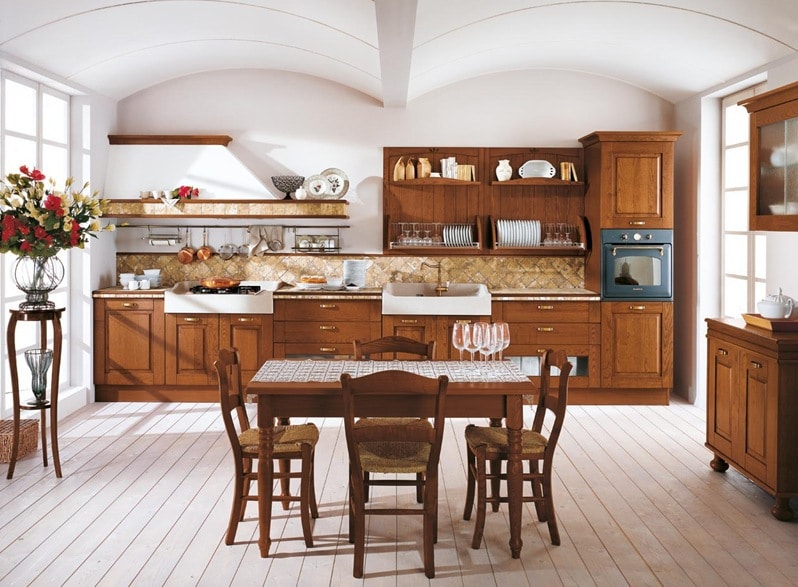
Functional and comfortable space: competent layout
- Make the room functional – correctly place all the necessary equipment and furniture, leave enough room for a dining table and, if possible, a recreation area.
- Ergonomically arrange the working area so that it was convenient to cook.
- Become a designer: turn a standard room into a stylish object of envy of acquaintances.

Triangle: Layout Rule
One of the few rules that should not be violated is the rule of the triangle. The main zones in the kitchen area (cooking, storage and washing area) should be at the tops of a conditional, preferably isosceles triangle. The perimeter of the figure should not exceed 3.5 m. It seems that the kitchen mathematics is complicated? In fact, it is enough to calculate the minimum allowed distance between the main zones:
- Between the hob or gas stove and sink should be left from 60 cm to 1 m of free surface of the countertop.
- When calculating the kitchen options, choose the layout of the headset with the maximum length of the working surface around the cooking and washing area.
- From the main storage place of products, refrigerator, to the table top should not be more than 1.2 m.

Triangle in typical layouts
The process of laying out the kitchen begins with the construction of the scheme: just draw the perimeter of the room, mark the location of the windows, doors. The starting point is the place where the water and sewer pipes are taken out. If you do not plan to reinstall the communications, the installation point of the washing will remain fixed, and the rest of the elements will have to be built around the sink.
The second important point is the outlet points of the ventilation bends. It is advisable to plan the suite so that the stove is close to the ventilation. If the withdrawal from the hood is to be stretched through the wall, it is necessary to make a box to hide the pipe.
Successful layout options for large and small kitchens
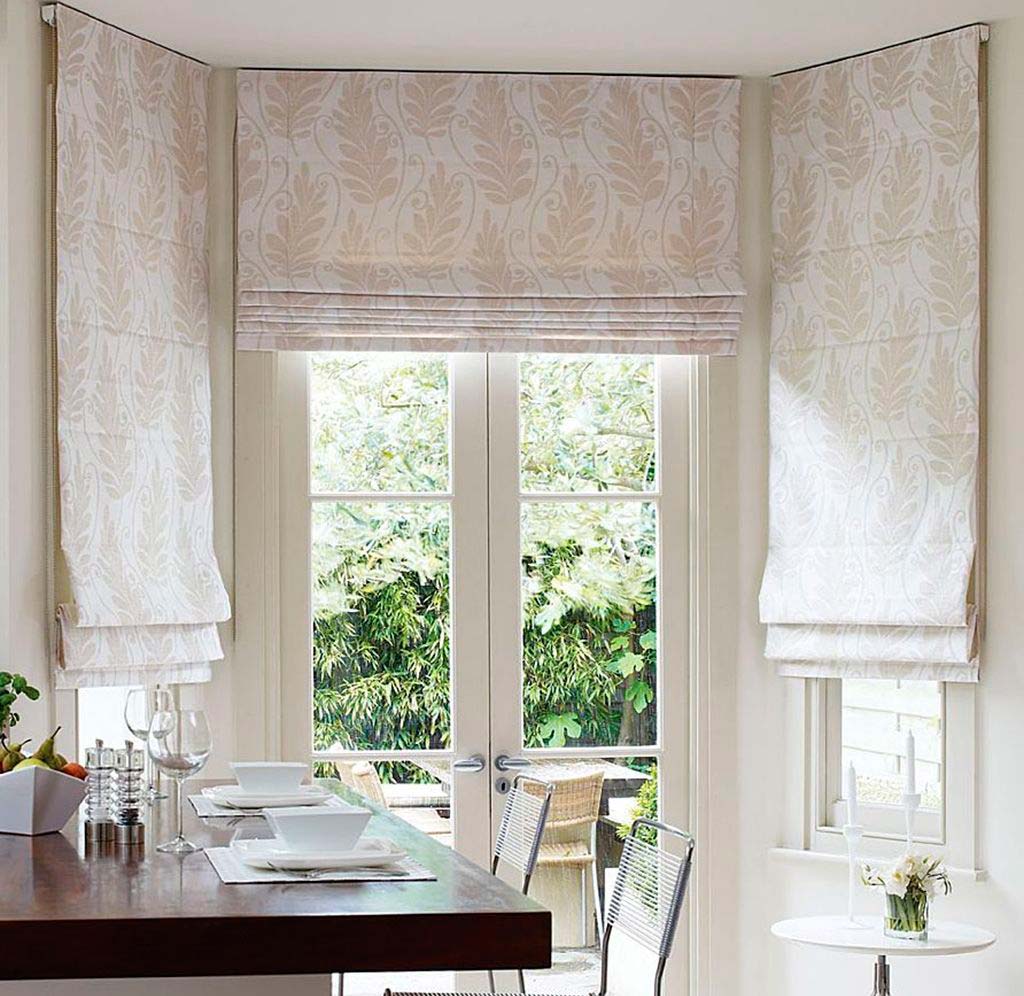
Standard types of kitchen: lay-out
The choice of the layout of the kitchen depends on the area and geometry of the room. Standard planning solutions:
- Linear. Universal planning option. Suitable for rooms with any footage. The headset and the technique are arranged along one, in a single-row type, or along two parallel walls. The layout with two rows of furniture is called parallel, or two-row.
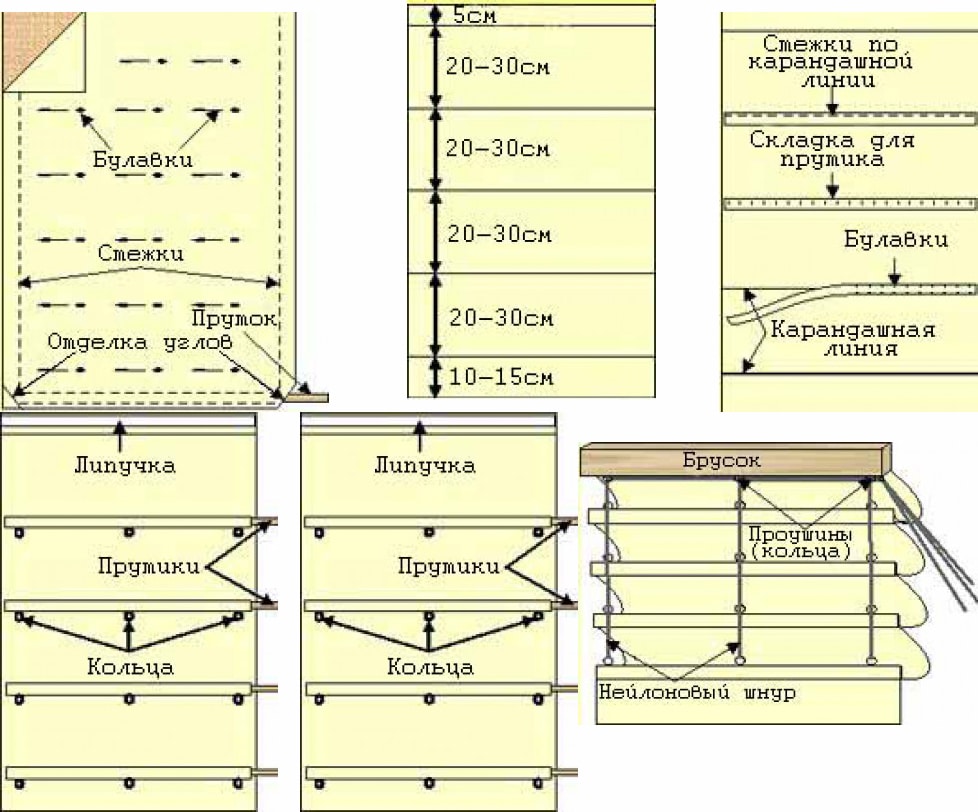
Parallel furnishing of a narrow kitchen
- Corner, or L-shaped kitchen. The layout is suitable for square and rectangular isolated rooms. Installed along the two walls of the corner set leaves enough free space to organize a full-fledged dining area.
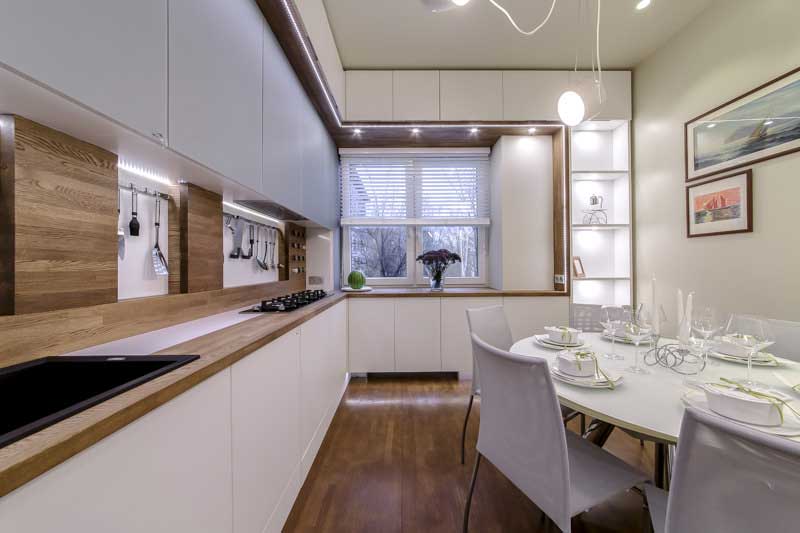
Project with angular arrangement of furniture
- U-shaped. Functional layout with the placement of furniture and work surfaces along three walls. Limitation: between the edges of the lower tier of furniture two parallel walls should have a passage from 1.2 m in width. Suitable for square rooms with a floor space of 9 sq. M. m.
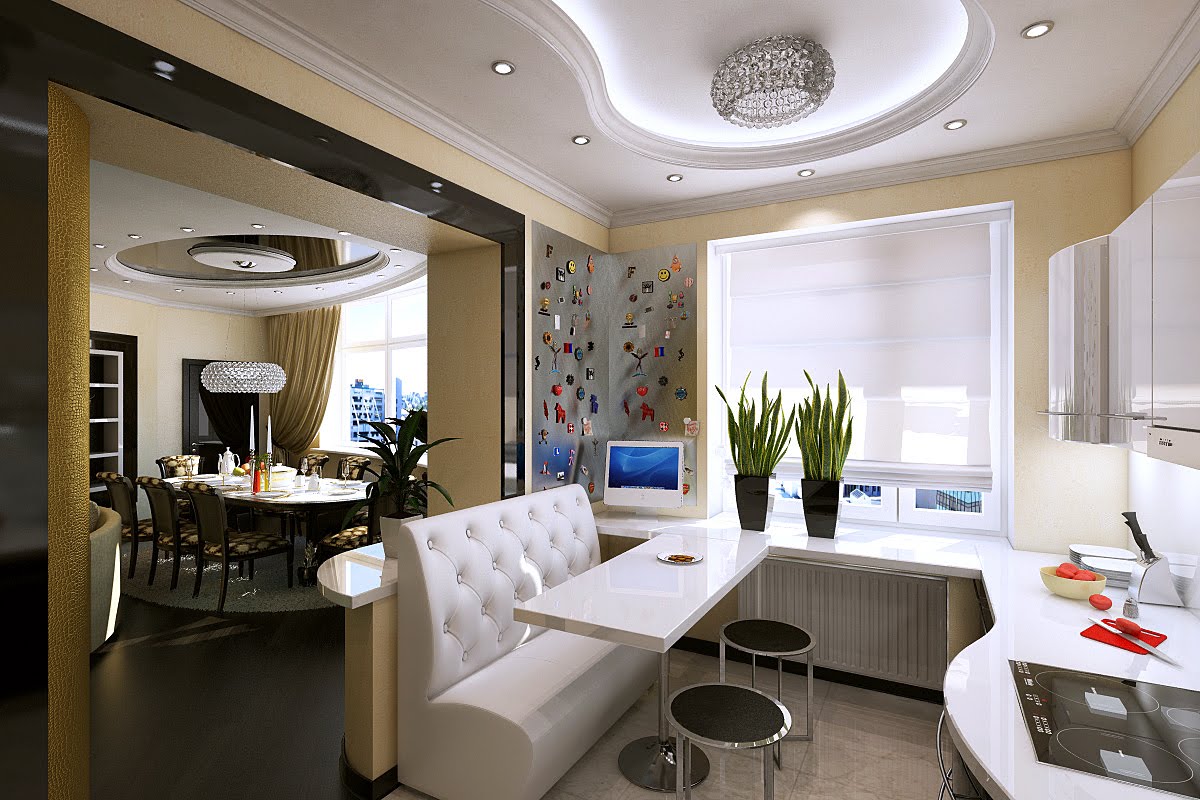
Non-standard version with a mobile stand for a small room
- G-planning. Complemented with a bar counter or a peninsula, the U-shaped set perfectly zoned the area of spacious kitchen-dining rooms and halls. The working area, the dining group and the rest area are delineated.
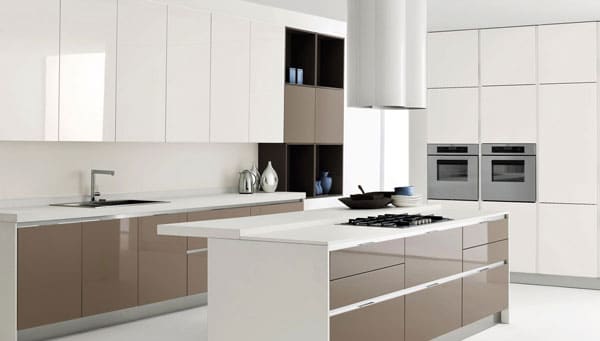
Island with a working surface and a stove
- Island. Full kitchen islands – for rooms with an area exceeding 20 m2. In fact, the island layout consists of two types: one part – linear or U-shaped; the second is an island.
- Asymmetric. Layout for rooms of complex geometric shape. Reminds the U-shaped version, but there are no parallel lines due to the narrowing shape of the room.

The combination of a linear variant with a peninsula in a modern interior
- Free. Furniture does not line up strictly in accordance with the standard type of planning, but is grouped in rooms by modules. Multiple planning decisions can also be combined in a single space.
Linear layout: simple solutions for different rooms
One of the most popular solutions in the modern kitchen interior is the linear alignment of furniture. Two classic variants of the linear layout of kitchens – one- and two-row. Difference – furniture is installed along one wall, or placed along parallel walls.

Scheme of organization of single-row layout
Single-row headsets: layout rules and room requirements
Linear kitchens are traditionally considered the best way to arrange small and narrow rooms. Sufficient room width is 2 m. In the center of the working area, a sink is installed, to the right of the sink – a cooking surface, to the left – a refrigerator.
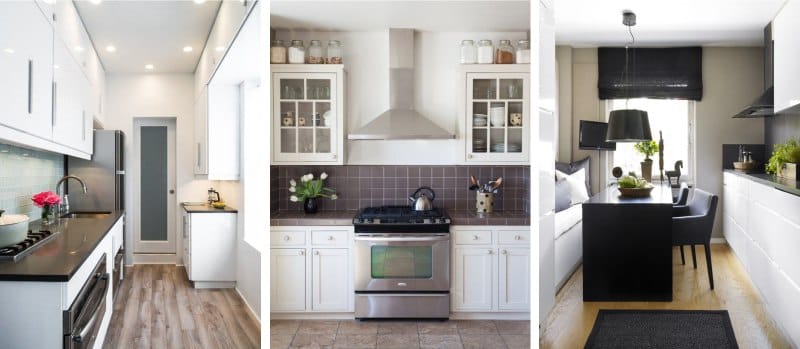
Linear kitchens in compact rooms
The minimum length of the headset is from 2 m. The maximum length can be up to 4.5 m. The choice for the kitchen of the layout option in one line is an excellent opportunity to save on equipment and expensive fittings. Instead of ergonomic cabinets of the upper tier with lifting mechanisms, you can easily order standard cabinets with hinged doors.

Black single-room furniture in a spacious dining room
Single-row kits are simply assembled from prefabricated factory modular kits. An undeniable advantage – the possibility of installing a seamless seamless table top made of inexpensive plates.

Ergonomic and elegant: without “architectural” excesses
If furniture is made to order, then the upper tier can be made with a non-standard height – close the wall to the ceiling.
Parallel layout: salvage for walk-in kitchens
Double-row or parallel layout – the best choice for long rooms, when the front door and window are opposite each other, under the window – radiator, which is undesirable to cover the furniture. Parallel layout is indispensable in apartments where the kitchen is through.
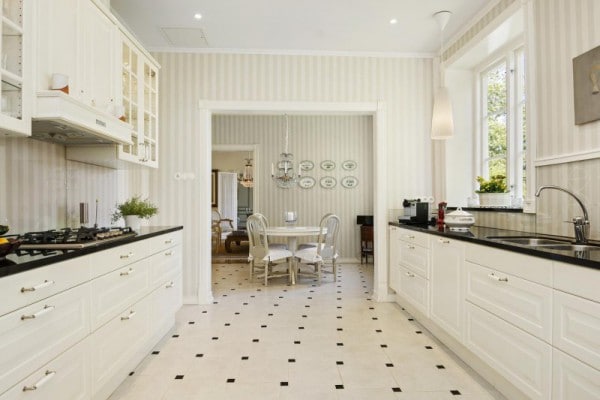
Parallel Layout
Requirements for planning: between two lines of furniture, you need to leave enough room for a person to move freely and open the doors without hindrance. Minimum – from 1.2 m.
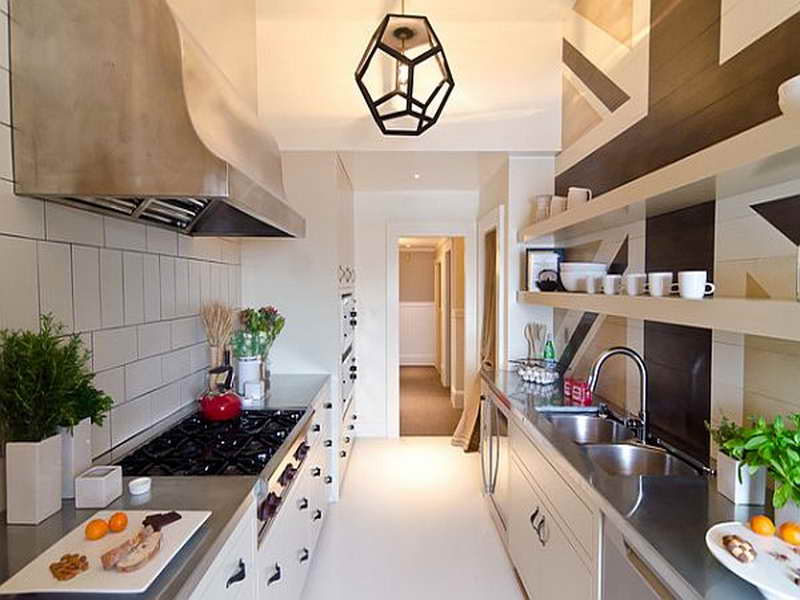
Kitchen with reduced depth in a narrow corridor: without the top tier
In double-row kitchens, it is advisable to build in a customized set. The oven can be raised 40 to 60 cm from the floor, installing it inside the cupboard cabinet – you do not have to bend over to get pastries.
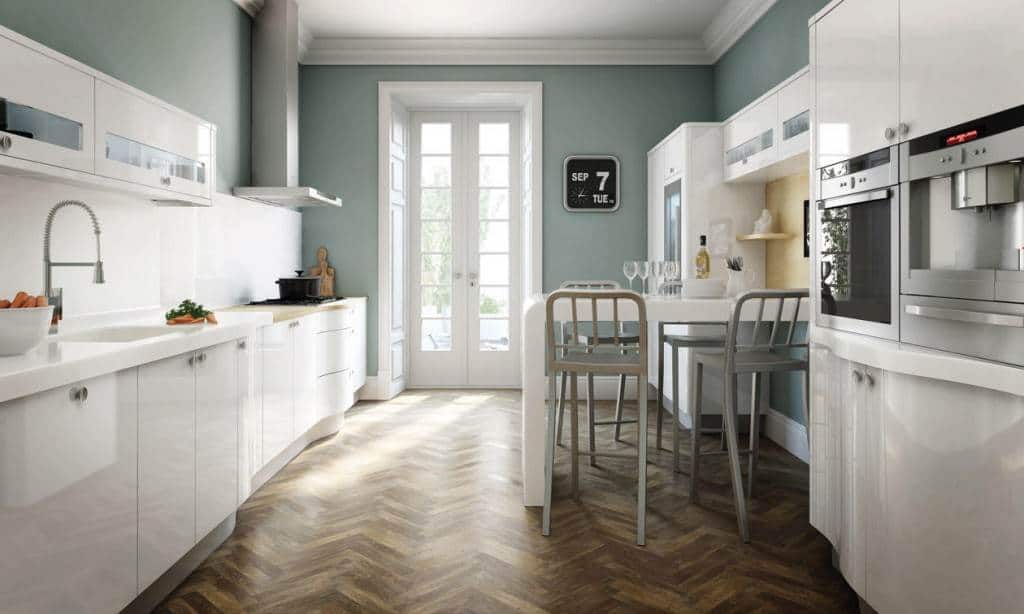
Luxurious white parallel kitchen
One line in the parallel planning can be assigned to the deaf shallow cabinets. This solution will help to hide from the eyes of all kitchen utensils, small appliances and utensils.
Perfect kitchen interiors with line layout
It seems that the standard layout of a room in one line is boring and trivial? On the contrary! Simplicity of form emphasizes the beauty of the facades. The room is automatically zoned: the line of the working area is clearly delineated.
TOP-5 simple and stylish linear options:
- The simple facade of matte wood with open drawers in the loft interior is underlined.
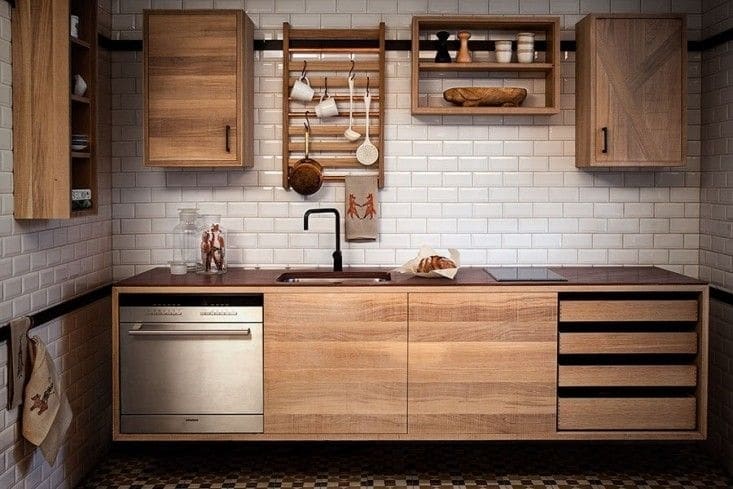
Laconic and stylish space
- Spacious kitchen-dining room with white furniture. Upper level – without external fittings.
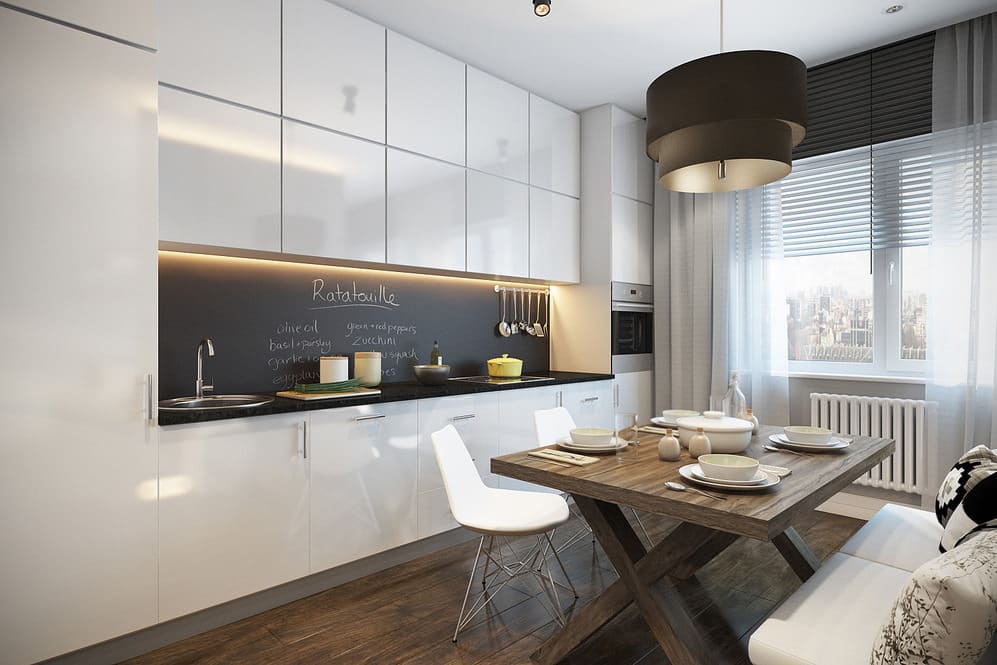
Working area – in a niche with an apron in matt black glass
- Compact furniture with the addition of a bar-rack.
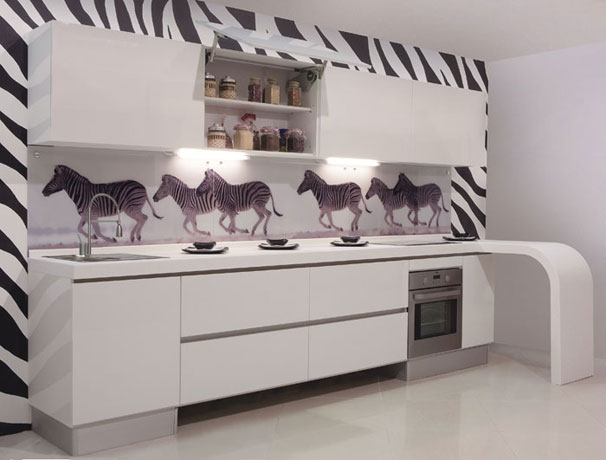
Zebras on the apron and print on the wall: original solution
- Luxurious two-row black kitchen with dining area.
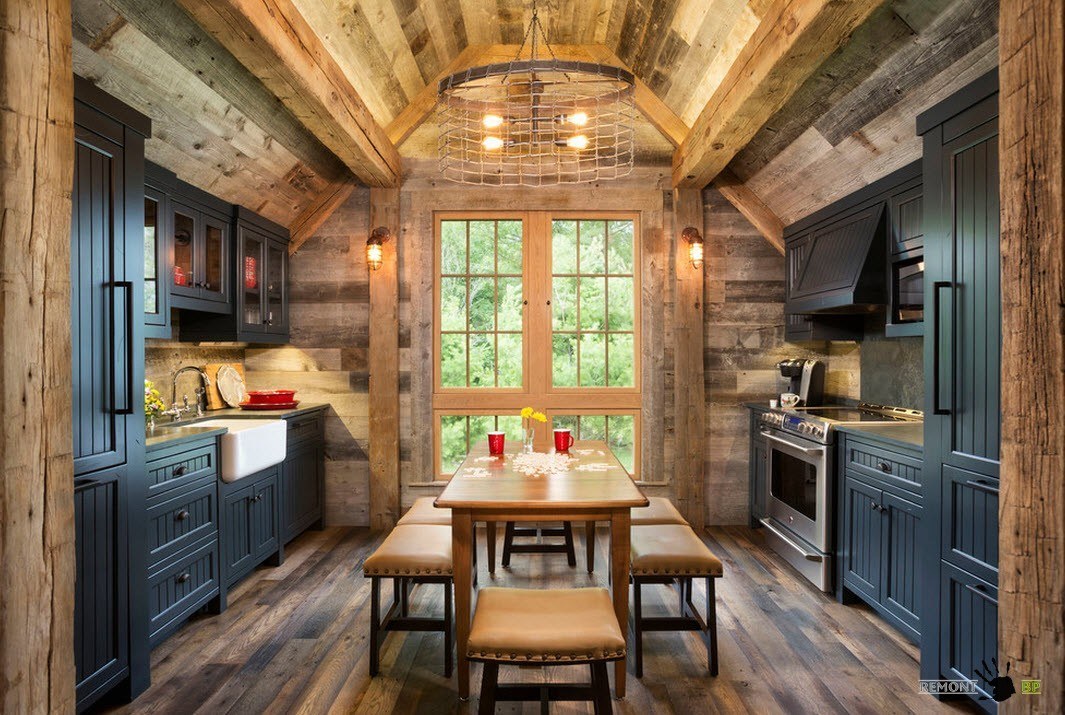
Stylish combination of black and natural wood
- Ceiling construction with lighting accentuates the work area.

Glossy facades and one-piece table top made of acrylic
Corner kitchen – the top solution for a square room
A popular solution for a small square room is a corner layout of the furniture arrangement with a separate dining area.

Kitchen with ventilation box in the corner
G-shaped or L-shaped headset: advantages and limitations
The standard layout is built around the sink, which is placed in the corner. The peculiarity of angular layouts is the maximum length of working surfaces for small dimensions. Installation of corner sets is a good choice for standard square rooms with an area of 8 – 10 sq.m.

Solution for micro-area
Benefits:
- Due to the long lower level, the number of hanging cabinets can be reduced without losing the usable area of the storage area.
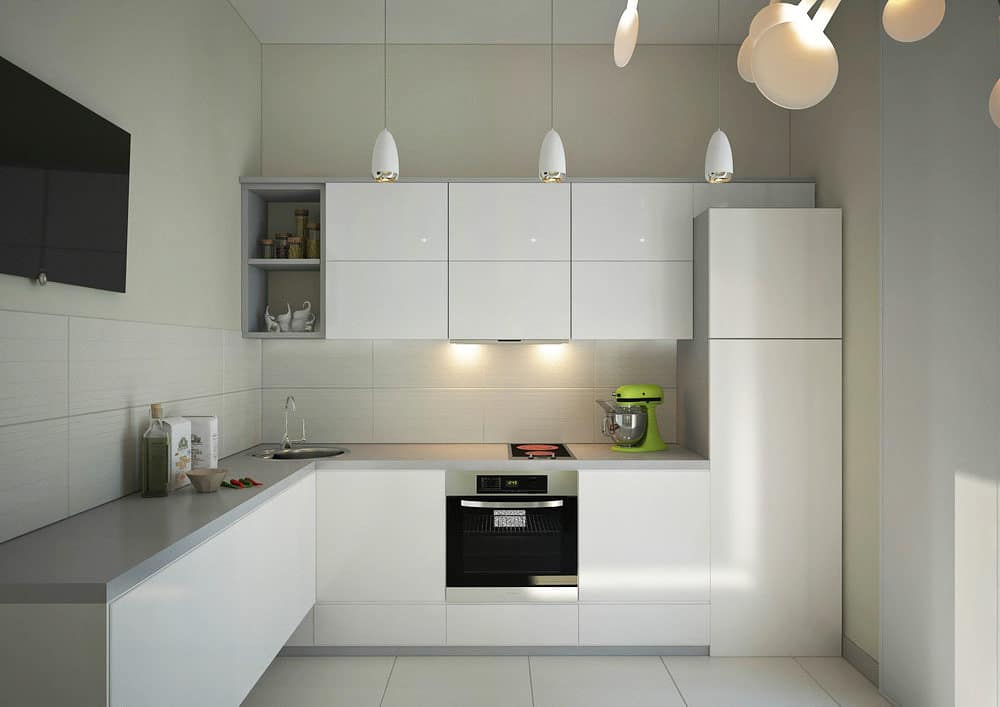
With the help of the corner arrangement it was possible to visually enlarge the room
- Excellent zoned area.
- There remains a large area for the dining group.
Zoning: working corner and dining area
A few examples of how fresh and interesting can look like a small kitchen with an angular layout:
- White furniture is in harmony with the natural wood of the dining room.
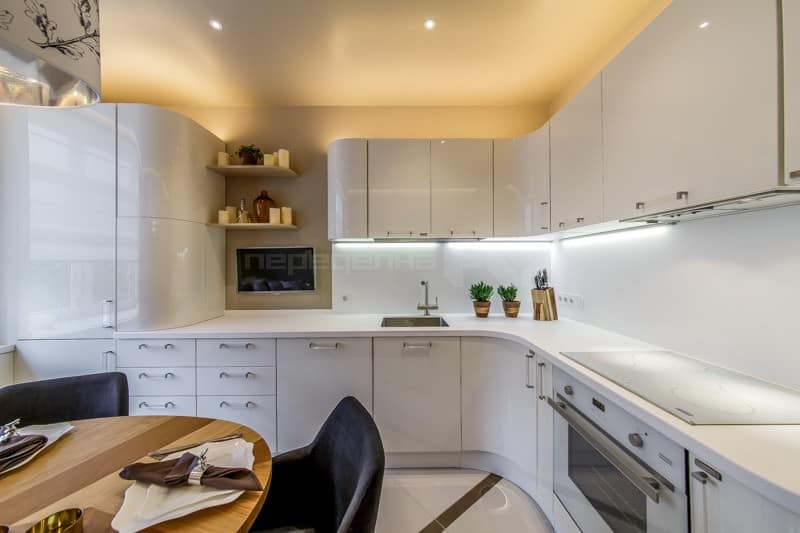
Kitchen with radius facades
- Bright furniture and contrasting color finishes.
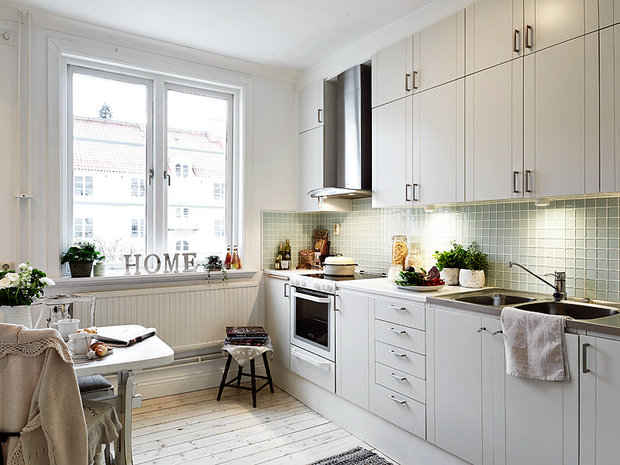
Red and White
- In the corner sets you can hide not only the oven and microwave oven, but also a refrigerator.
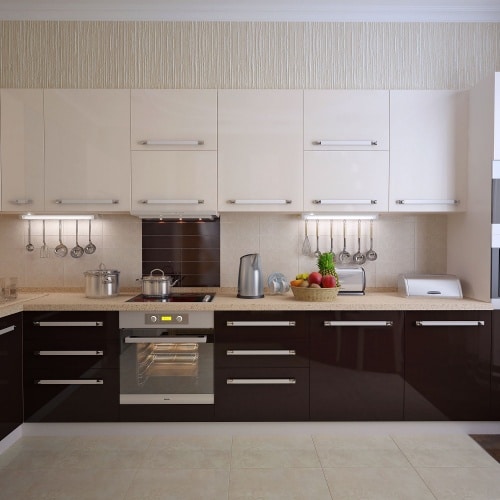
Corner set in neutral shade
- Bright accents: an orange decor, a vinyl film on the cabinets of the upper tier and a refrigerator.
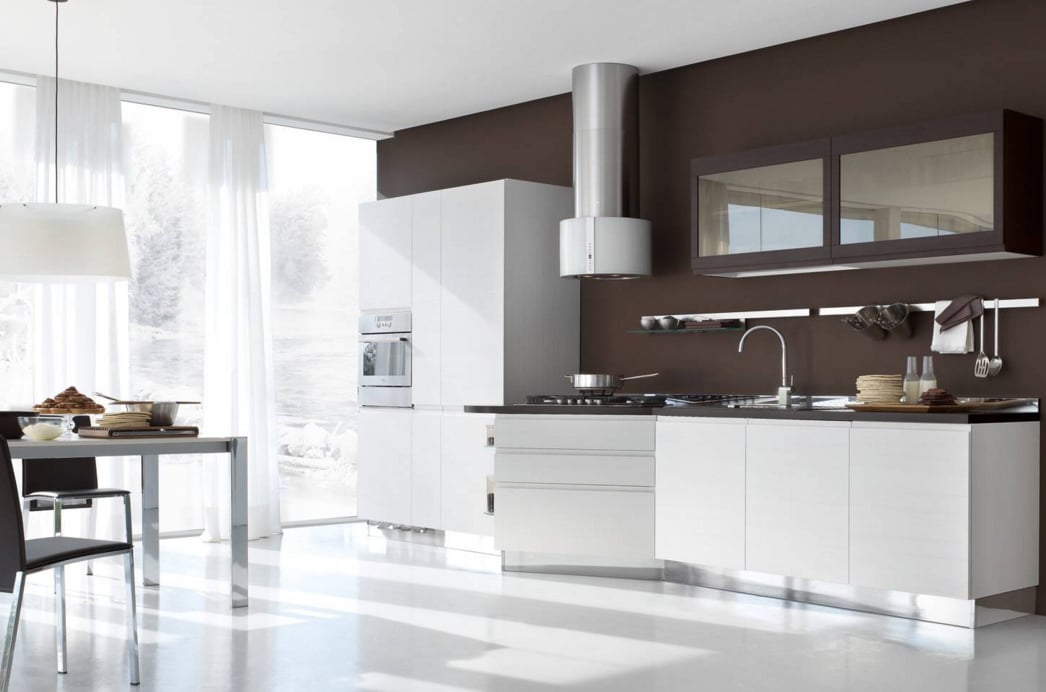
Small room with a bright suite
U-shaped and G-shaped kitchen: the maximum of the walls involved
The U-shaped layout is suitable for small rooms and rooms with non-standard geometry. You can not find ready-made modular headsets. To equip the tiny kitchen, you have to change the depth of the cabinets.
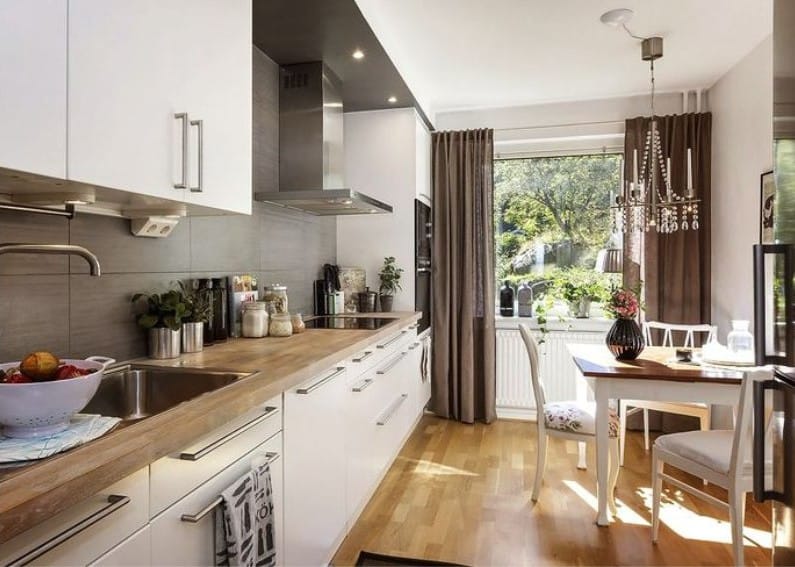
Sink – under the window
U-shaped kitchen layouts will help to use the wall with the window: by connecting two parallel rows of cabinets, you can make a dining table by the window, saving a precious square meter. Under the window, you can not install the hob and the hob.
Indispensable asymmetric P-layout in rooms where there are protrusions, niches, and the shape of a trapezium or polygon.
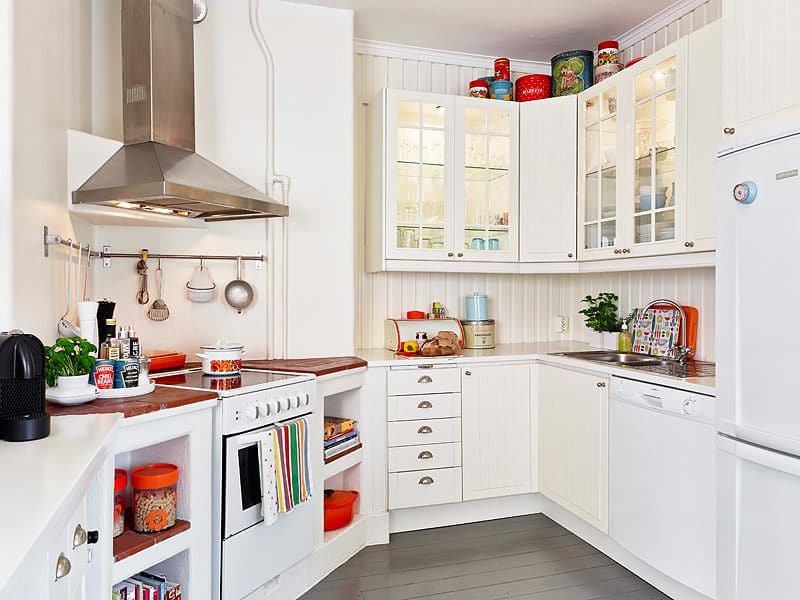
A great solution for a non-standard kitchen with a ventilation niche
The main problem – you have to install an expensive countertop of acrylic stone, which will be made to order. In this case, the surface will be seamless. When installing budget slabs, you will have to combine and hide the seams.
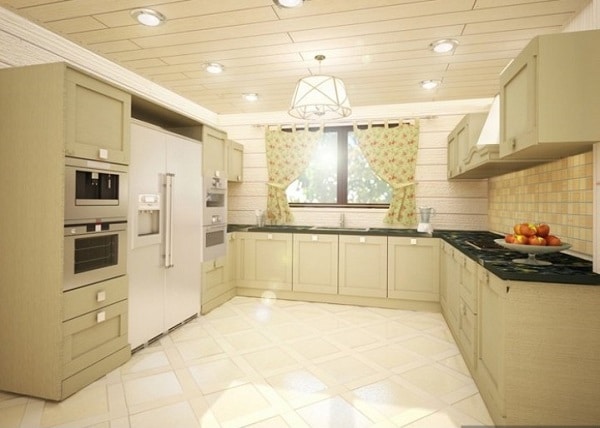
U-shaped kitchen in a spacious room of a private house
Trend – addition of a U-shaped kitchen with a small peninsula or a bar counter. The G-shaped layout for spacious kitchen-dining rooms is suitable.

Kitchen with breakfast bar
Island layout: chic for spacious kitchens
Islands in the layout of kitchens remain at the peak of fashion. Designers combine island modules with all types of standard layouts – from linear single-row to U-shaped sets. The planning of the area is based exclusively on the size of the premises and depends directly on the budget allocated for the arrangement.
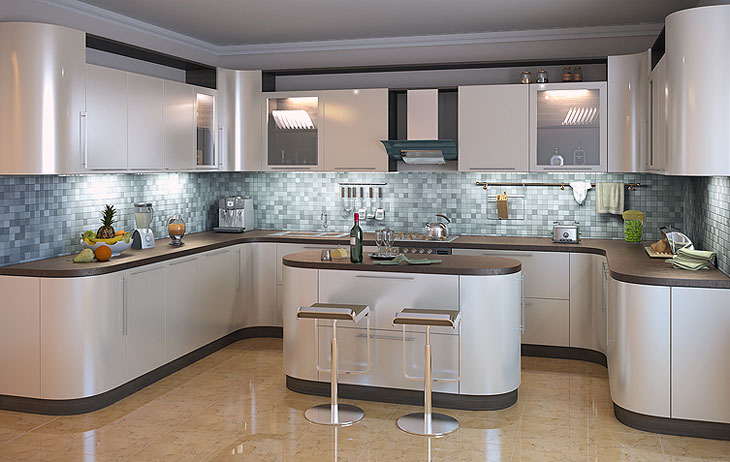
Fashionable gray island in a modern interior
Combination headset and island
The complexity of the island layout depends on the functional load the module carries. If the island element is scheduled to be built in the hob, you need to conduct electrical wiring and solve the issue with the hood.
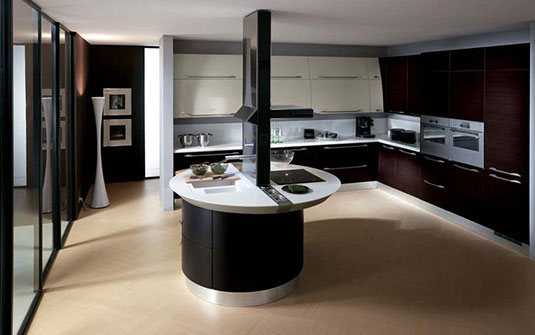
Island with hob
Models of hoods for mounting above island modules are an order of magnitude more expensive.
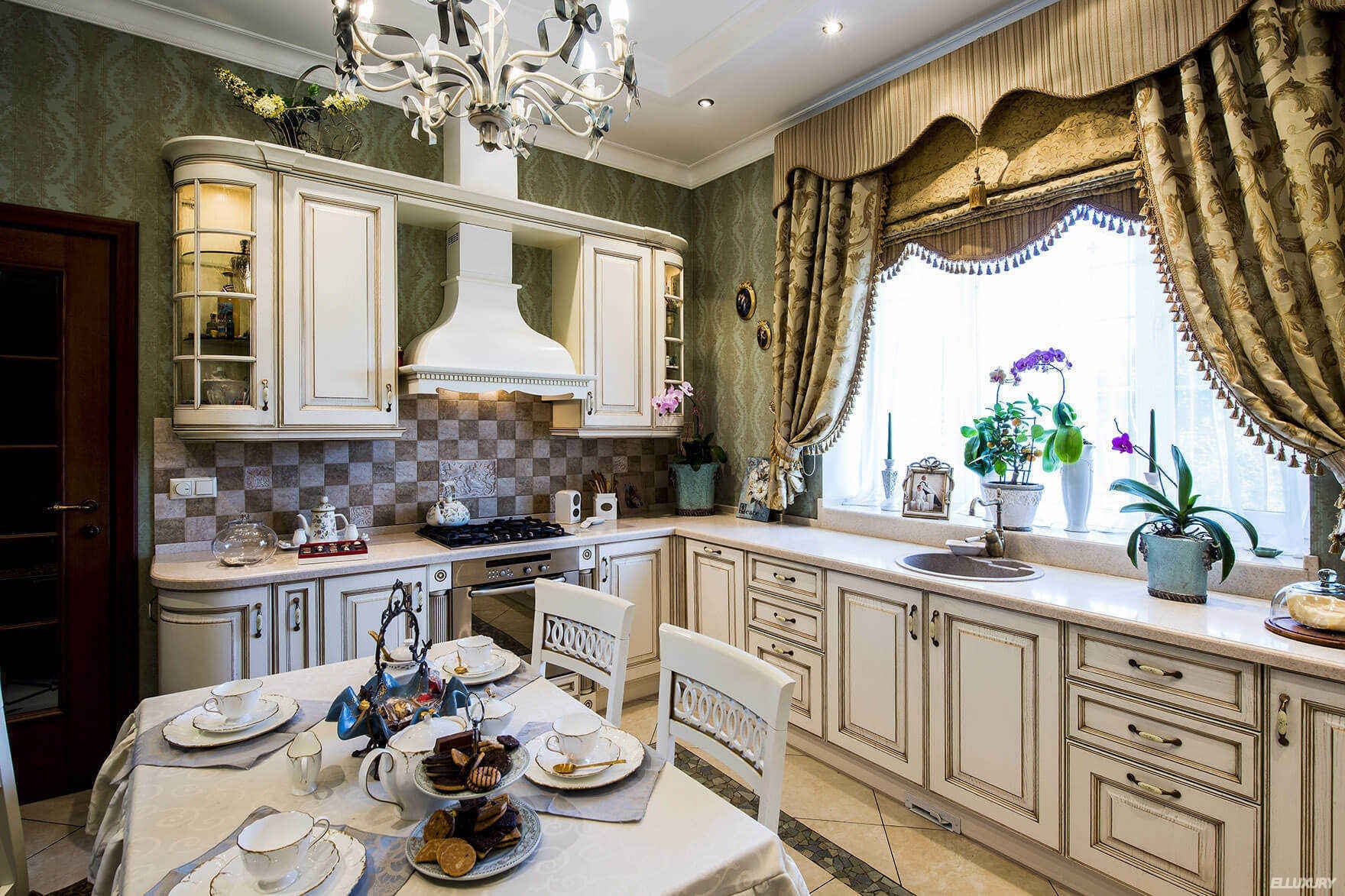
Bright and compact island with a sink
When installing the sink will have to bring the water distribution and sewage to the point where the island is planned. Naturally, the old flooring will suffer.
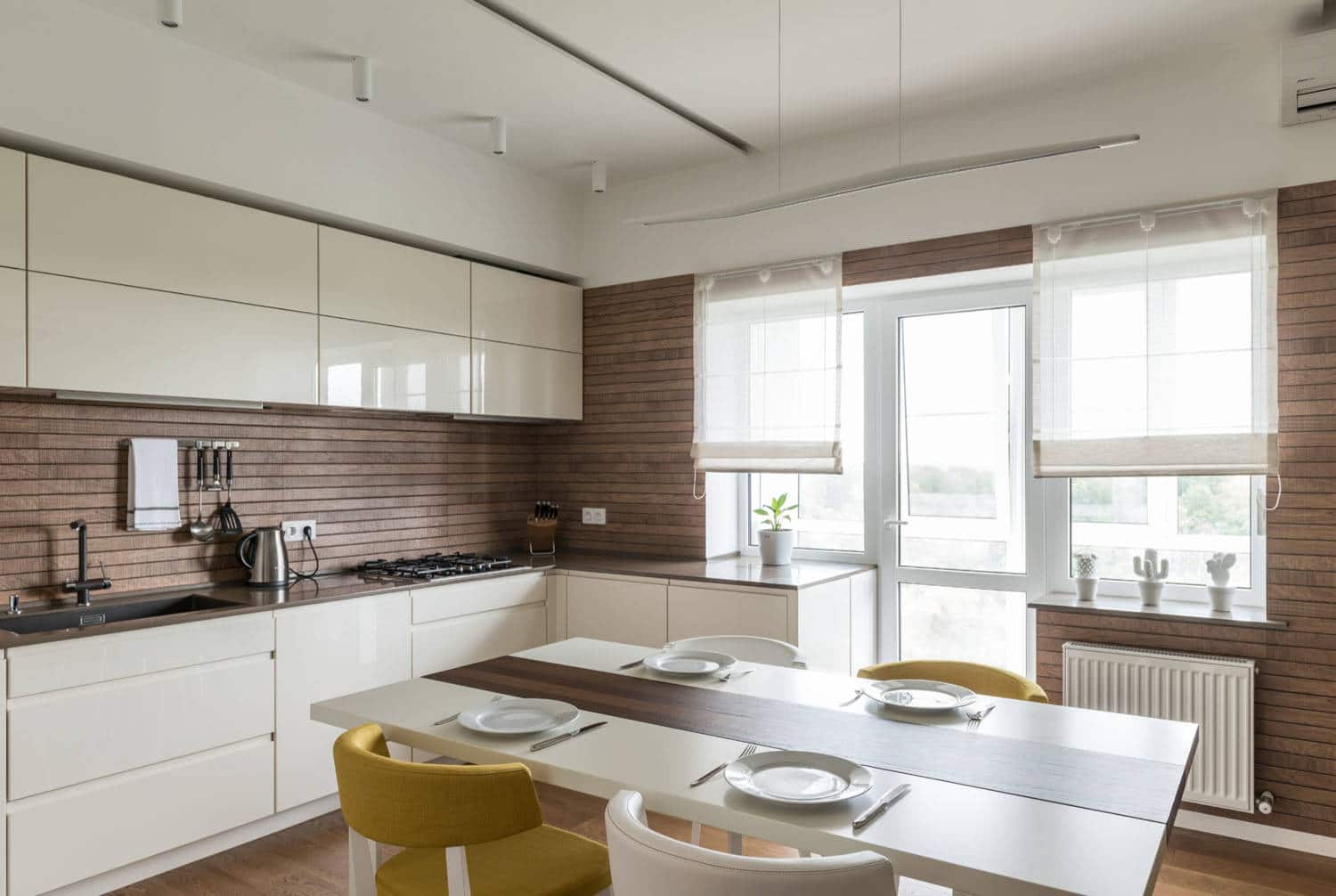
No equipment, but with drawers for storage: island – dining table
Economical version of the island layout: installation of the module with a storage area, built-in small refrigerator for food and wine. Also use the island as a dining area.
The technology is much easier to build in a headset, located near the wall. The island module is combined with:
- Single row kitchen.
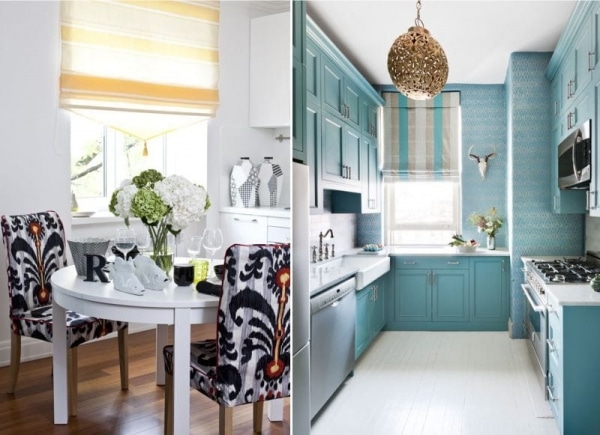
Combination with a linear kitchen
- Corner and U-shaped headsets.

Island in the black and white kitchen-dining room
Islands as a full-fledged kitchen: modern interiors
In the layout of modern kitchen zones in studios, full-fledged island cuisine is increasingly found. The shape of the modules can vary, and the finish trim is chosen by the designer for a specific interior.
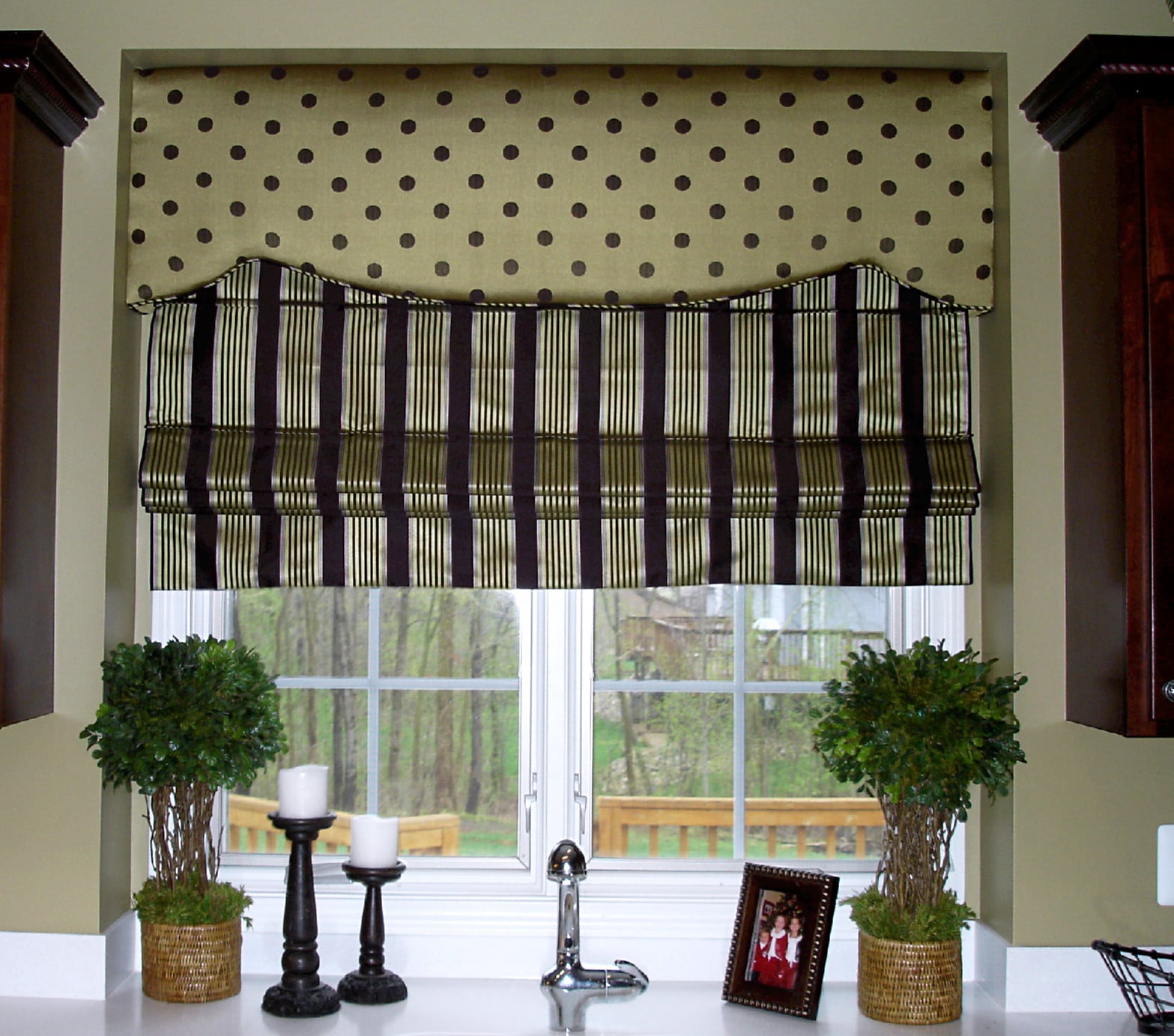
Full kitchen for the studio
The technical equipment of the island is impressive: in the module, for installation which is sufficient 2 square meters. m, a stove, a refrigerator, a dishwasher and an oven can be installed. In addition to technology, inside shelves and drawers for dishes.

Round functional island
Free planning: design solutions
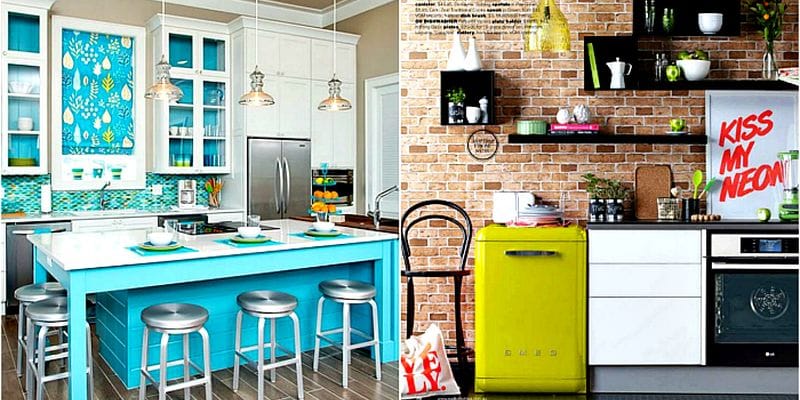
Non-standard bold ideas
Free kitchen layout – for spacious rooms of private houses. Furniture is not installed according to the standard scheme, but block modules are created, which are grouped in functional zones. Give preference to free planning in the studio – the area will not be overloaded with furniture, and the interior – will not become obsolete.
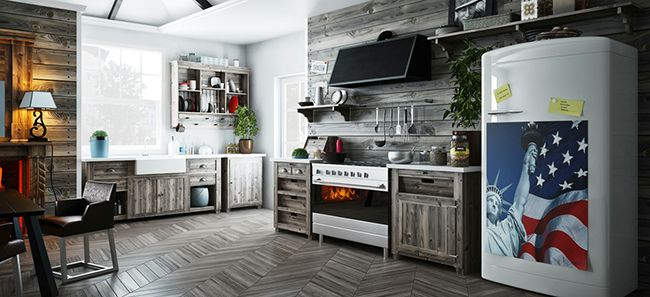
Country: extraordinary layout
Non-standard kitchens look like with a combination of several layout options. For example, a super-functional room with two islands and line headsets.
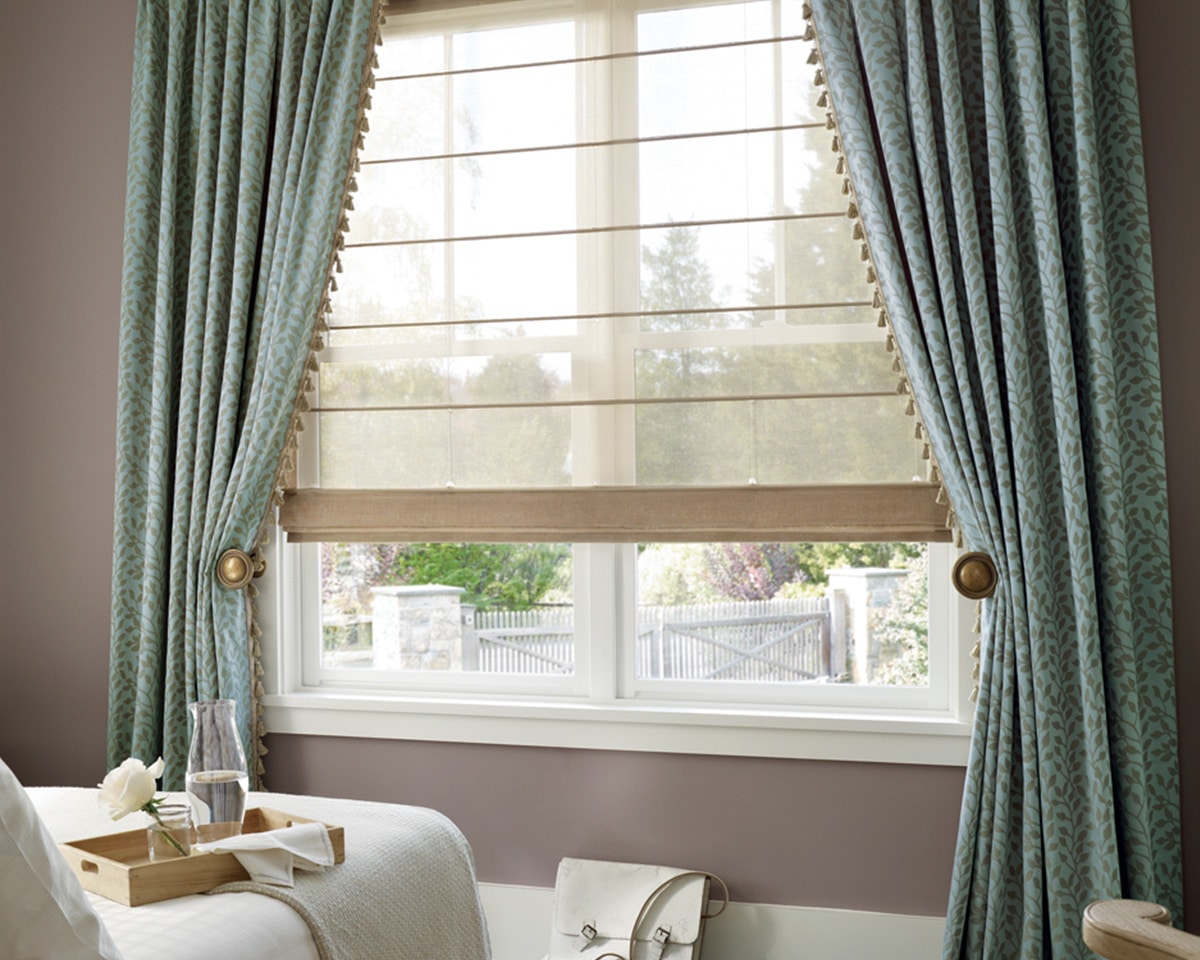
Two islands: a kitchen for a large family
Air bar-bar as a dining table, installed outside the kitchen: a bright solution for a fashionable apartment.
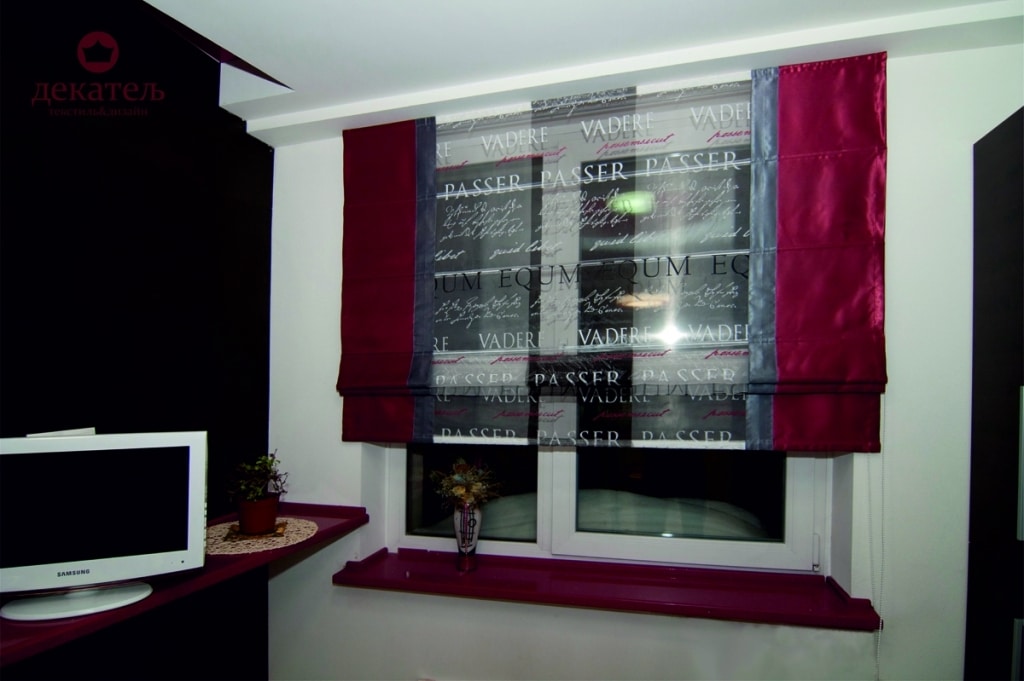
Non-standard layout
A translucent countertop that connects the island with the wall: a visual separation of the kitchen area.
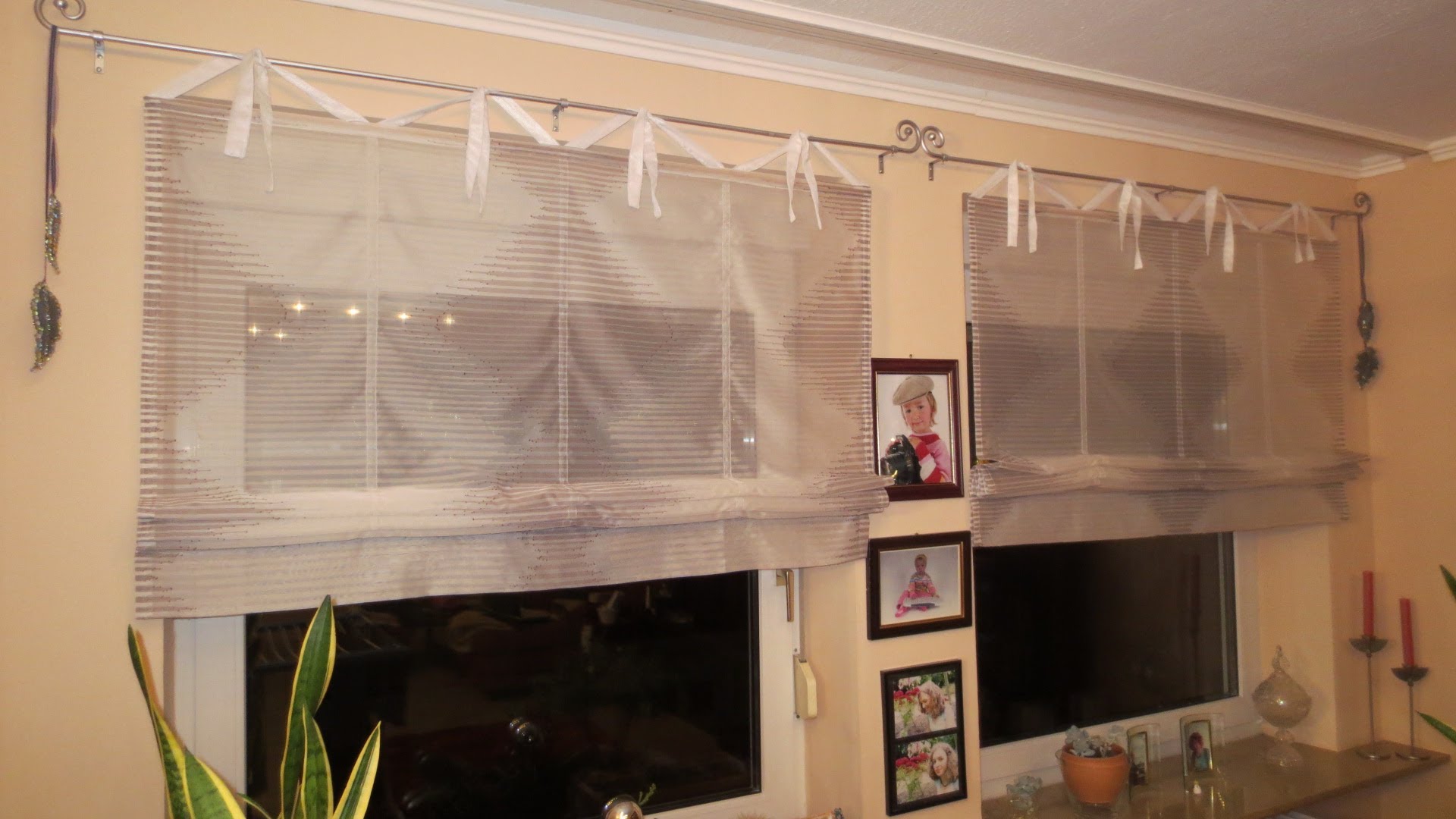
Chocolate-white kitchen in a free lay-out
When choosing a design and layout, do not forget about functionality and convenience. After all, the kitchen is exactly the room where the whole family gathers, which means everyone should be comfortable. Entrust planning to the designer, especially if the premises are small. After all, to hide from prying eyes kitchen utensils, without cluttering the micro-area with furniture, is difficult.


